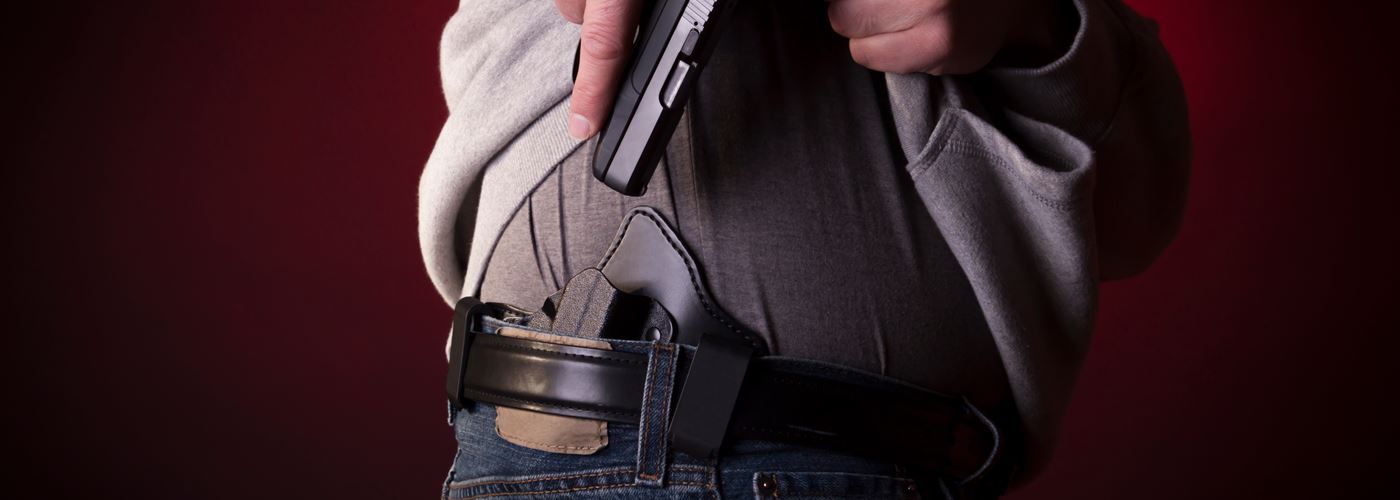
In my previous article, "Maximize Your Personal Safety with Proven Executive Protection Strategies," I mentioned "Threat Recognition Through Body Language." I also mentioned that an entire article could be written on that aspect alone; it would have been more accurate to say that a whole book could be written.
I've put together some basic introductory skills that can help you take control of your environment. Let's explore these techniques that will sharpen your observational skills and help you identify potentially dangerous human behavior more effectively. In this article, I'm going to focus on scanning crowds and/or individuals from afar so we can predict a dangerous encounter, to evacuate you and/or your family before a situation fully develops into a critical incident.
Crowd Scanning
These days, we spend a lot of time around crowds of people, whether at a store, a concert, or another venue. If you're in a location with a crowd of people, it can be difficult to pick up on specific threats. Begin by scanning the crowd from left to right. Move your gaze gradually across the area, stopping every few degrees to take in different groups and individuals. This method allows you to gather a broader context of the environment.
Individual Focus
After scanning the crowd, concentrate on specific individuals within the crowd. Shift your attention to their behavior and actions to gain deeper insights into unusual patterns or interactions. Pay particular attention to anyone who is not reacting as the rest of the crowd is. A specific example of this are photos taken immediately before the assassination attempt of President Ronald Regan. While most of the crowd was smiling and taking in the moment of being in the presence of the President of the United States, John Hinkley had an almost expressionless look on his face. He was laser-focused on bringing the plan he had in his head to fruition.
Instincts and Relaxation
It's essential to stay relaxed while observing. Trust your instincts about the situation; often, your intuition can pick up on subtle cues that your conscious mind might overlook. "The Gift of Fear" by Gavin de Becker is an excellent resource for paying attention to your inner voice. Even though a whole section is dedicated to how bad firearms are, the sound information in the book far outweighs the diatribe.
Utilizing Peripheral Vision
Avoid becoming overly focused on just one element or individual. Allow your peripheral vision to remain active, enabling you to notice additional details and movements that might otherwise go unnoticed.
What Are We Looking For?
When observing or having contact with unknown people, we look at the key indicators. For our purposes, pay particular attention to the hands and faces of those you observe. These areas are often the most expressive and can reveal much about a person's emotional state, intentions, or reactions to their surroundings. Facial expressions are key. It's often said the eyes are the windows into a person's soul; however, facial expressions frequently show involuntary reactions, even more so than the eyes.
In my early years of law enforcement, an experienced officer told me to always keep my eyes on the hands of people I encountered. Not only could the hands be used as personal weapons but also carry more serious deadly weapons, and the hands had to facilitate an assault. It made a lot of sense, and I always kept this in mind when dealing with unknown contacts. The hands were consistently observed, even if they were in my peripheral vision.
Now that we've introduced you to the art of observation and covered the key indicators of the face and hands, let's dive into our next mission: identifying any inconsistencies or disruptions in the flow of events around us. In my career, I have dealt with several emotionally charged people. Sometimes, they make it very clear they're having an issue, whether a mental health episode, a domestic dispute, or substance abuse are causing it. In most cases I worked, I could predict that I would have to go hands-on with a suspect. These indicators are apparent: clenched and bared teeth, tightening fists, being extremely loud verbally, etc.
If you encounter a person like this, you'll know it well in advance. Keep in mind that you're acting as the protective agent for your family and yourself. The best thing you can do is to avoid this situation. Even if a situation like this is blocking the only exit to the store you're in, turn around, spend a little bit more time inside, and wait for the scene to clear before exiting. Make sure your family stays close to you in case things escalate and get really crazy; then, you can evacuate together instead of having to locate a family member while trying to negotiate a volatile situation.
What about those situations when you're dealing with a criminal who isn't emotionally charged, has been in his game for a few years, and is more secretive about their intentions? This kind of person can sometimes be dissuaded by presence alone. However, you may have to engage with this kind of person. I've experienced most of these cases during vacations in larger cities like New Orleans. My then-wife and I were looking at a street map on a sidewalk. A man passed us, and I watched him in the reflection of the map's plexiglass covering. After he made it a few steps past us, he turned around and returned toward us. I turned around, stepped between him and my wife, created distance, and asked if there was anything I could do to help him. He then mumbled some excuse and turned back around and went in the other direction. I’m lucky this worked I suppose, but I knew if it didn’t I had already made my plan to respond to a physical attack, or even a knife or a gun.
Suppose you want a PHD in dealing with unknown contacts. In that case, I highly recommend taking the Shiworks Extreme Close Quarters Combat class. The Friday evening before the weekend kicks off is Craig Douglas' Managing Unknown Contacts class, and it's worth its weight in gold. To this date, the three-day class is one of the most beneficial training experiences I've ever had. I've used the techniques taught to me by Craig on several occasions, and I can attest to their real-world effectiveness.
By paying attention to these engaging verbal and nonverbal elements, we can deepen our understanding of the dynamics at play in any situation. Our observant and analytical nature fosters a safer environment for ourselves and others. It enhances our ability to navigate complex social interactions with confidence.
Making Yourself a More Difficult Target
One of the most advantageous practices you can adopt regarding body language and enhancing personal safety is to pay close attention to how you carry yourself. To begin with, maintaining good posture is essential; stand straight with your shoulders back and your spine aligned, as this conveys confidence and makes you appear more assertive.
As you walk, do so purposefully and confidently; take measured strides rather than shuffling along. This purposeful movement can significantly impact how others perceive you. Furthermore, keep your head held high and your gaze slightly ahead, which helps you stay aware of your surroundings and projects self-assurance.
Staying alert is critical—be mindful of the people and environment around you. Demonstrating that you are observant and engaged sends a clear message to potential threats: you are not an easy target. This awareness can also help you react appropriately to any unforeseen situations.
It's essential to recognize that, much like predators in the animal kingdom, criminals often select targets that exhibit signs of vulnerability or distraction. By presenting yourself as confident and aware, you significantly reduce the likelihood of becoming a victim, as you give off the impression that you are prepared to handle any challenges that may arise.
In Closing
By mastering these observation skills and understanding the subtleties of body language, you're positioning yourself to recognize danger before it becomes imminent. Remember, safety is not just about reacting to threats but proactively creating a secure environment for yourself and those around you.
As you practice these techniques, remain patient and allow your skills to develop over time. Each encounter offers a learning opportunity, enhancing your instincts and observational abilities. Stay vigilant, trust your intuition, and continuously strive for awareness in your surroundings. With these tools at your disposal, you will navigate environments with greater confidence and poise, ultimately maximizing your personal safety.
Interested in taking a firearms class near you? Trainers, register as a shooting instructor today.
